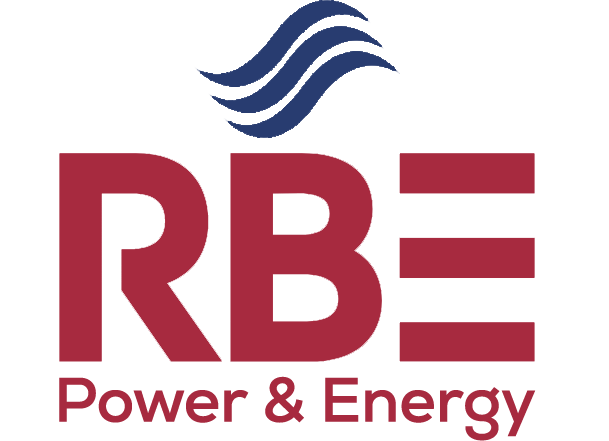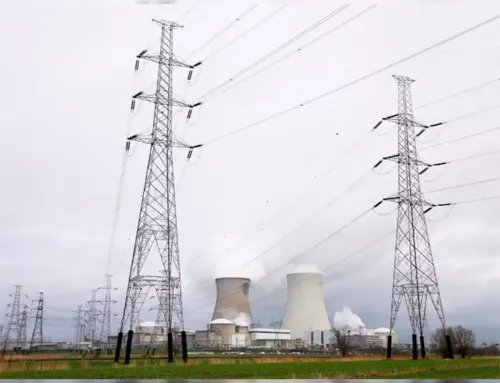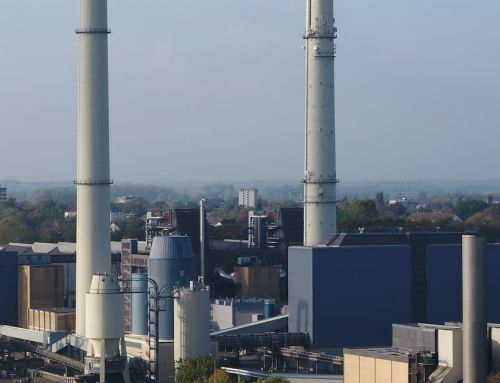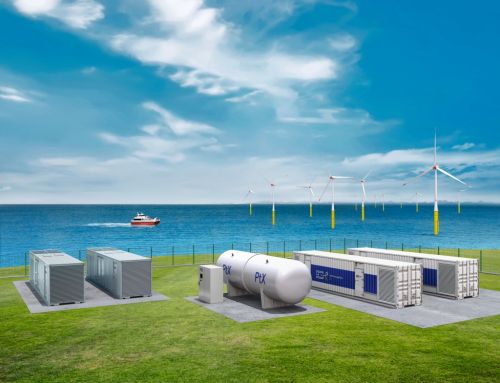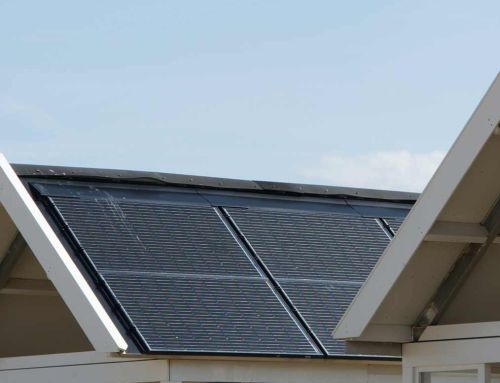The colour spectrum is used to describe how hydrogen is produced and the amount of CO2 emitted in the process. So even though all types of H2 have the same chemical and physical properties, they do not have the same carbon footprint. This has implications for our environment and the ongoing energy transition on a global scale.
Green hydrogen: the sustainable, carbon-free hydrogen
Let’s start with the ‘green’ end of the hydrogen colour spectrum. Green hydrogen is the term used for hydrogen that is made by means of electrolysis using renewable energy sources, such as wind, solar, or hydro power.
Electrolysers use an electrochemical reaction to split water into its components of hydrogen (H2) and oxygen (O2) – emitting zero greenhouse gas (GHG) emissions in the process. Green hydrogen is the clean alternative to fossil fuels and has tremendous potential as a critical enabler in the global transition towards a sustainable energy economy.
Blue hydrogen: the low carbon hydrogen
Blue hydrogen is made from fossil fuels, typically natural gas, by using steam-methane-reforming (SMR) or auto-thermal-reforming (ATR) processes. The output is H2 but also carbon dioxide as a by-product. By capturing the CO2 at the source and storing it underground, blue hydrogen can become a low carbon product. This is also referred to as carbon sequestration.
Grey hydrogen: the traditional process
Grey hydrogen is considered the ‘traditional’ method of producing H2 and is currently the most common form of hydrogen production. Using a steam reforming process, grey hydrogen is produced from natural gas, but without capturing the carbon dioxide in the process.
Black (or brown) hydrogen: coal
At the very opposite end of the spectrum from green hydrogen is black hydrogen made from fossil fuels. Hydrogen is produced from black coal or lignite (brown coal) through a ‘gasification’ process.
Pink hydrogen: nuclear energy
Pink hydrogen also finds its place in the colour spectrum. Pink hydrogen refers to H2 which is produced through electrolysis powered by nuclear energy. In some cases, this production-form is also referred to as purple or red hydrogen.
Turquoise hydrogen: methane pyrolysis
Finally, a recent addition to the spectrum is turquoise hydrogen. Turquoise hydrogen is made using methane pyrolysis, which splits methane into hydrogen gas and solid carbon. This is still very immature and unlikely to play a big role. In the future, turquoise hydrogen might be considered as a low-emissions choice depending on the process being powered by renewable energy and whether the carbon will be permanently stored or used.
Will green hydrogen power the future?
Will green hydrogen power the future?
Although the concept of hydrogen as a fuel dates back decades, it has now been pushed into the spotlight along with net zero ambitions and the urgency to ensure a sustainable energy future.
The EU Commission estimates green hydrogen to meet 24% of global energy demands by 2050. Many companies across a wide range of industries have an opportunity to leverage green hydrogen – and those who do so successfully are expected to benefit from a growing hydrogen fuel economy at scale.
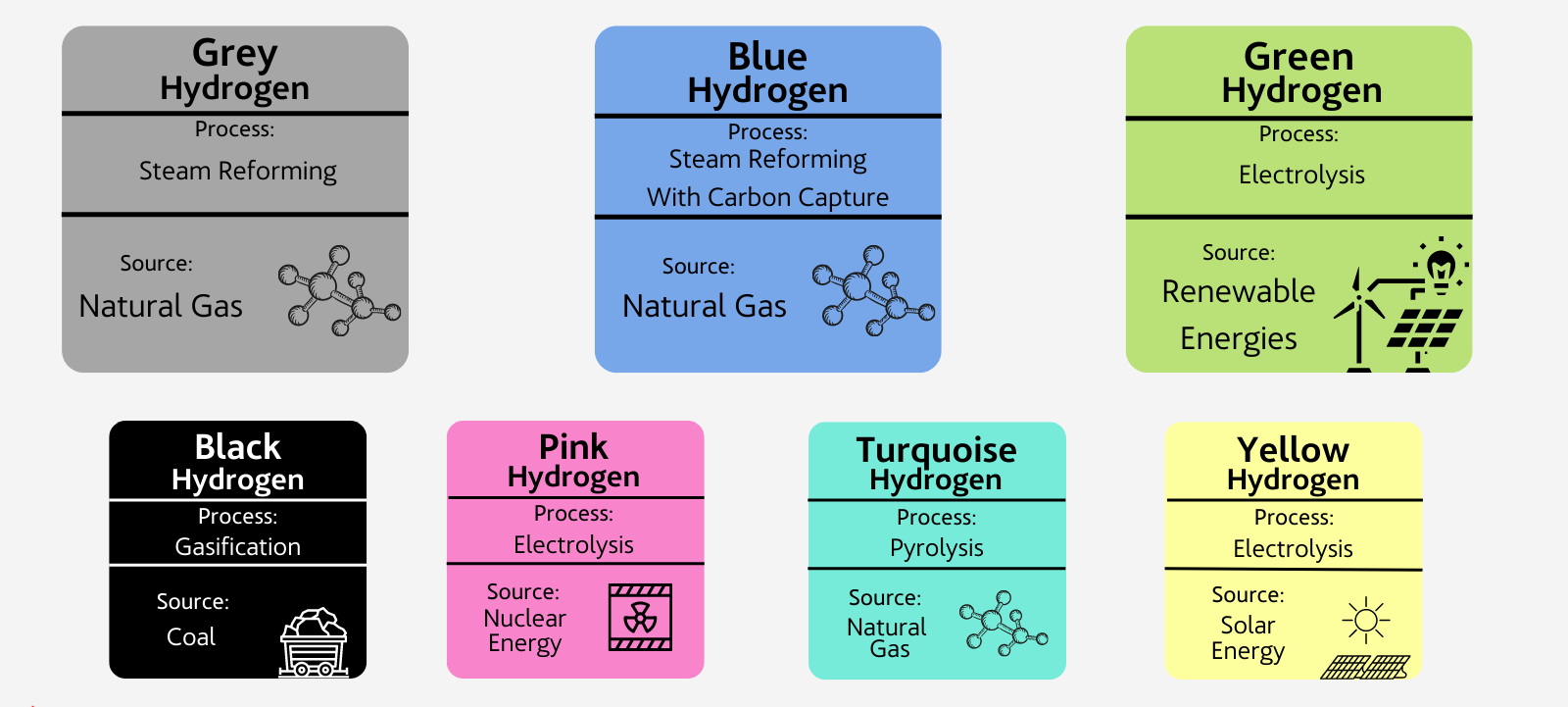
Hydrogen & Renewable energy
The shift to renewable energy from fossil fuels requires new technologies and solutions for energy production, system enablers and infrastructure. Materials often need to be lighter, stronger, and withstand higher temperatures and more corrosive atmospheres.
With our high-integrity grades and products, we can enable the development of new technologies and applications such as hydrogen applications, concentrated solar power, offshore wind, geothermal energy, and bioenergy as well as carbon capture and storage.
Hydrogen solutions
Hydrogen can be used across various applications from mobility to heavy industry, directly as a combustion fuel to generate electricity, or as backup power – thereby helping to decarbonize transportation and industries.
We offer materials, products, and solutions suitable for hydrogen production, distribution, and hydrogen usage like in fuel cells and electrolyzers. While heat exchanger tubing and hollow bars play a key role in hydrogen production, coiled tubing products support its distribution.
For one of the most critical components in the hydrogen fuel cell stack – the bipolar plates – we offer a portfolio of advanced coated strip steel.
Hydrogen refueling stations
In addition, RBE offers a micro-factory on-site manufacturing solution of high-pressure tubes for hydrogen refueling stations.
The mobile and connected container can be tailored to suit individual customer needs and be flexibly located where required, reducing waste, and increasing safety along with time and cost savings.
